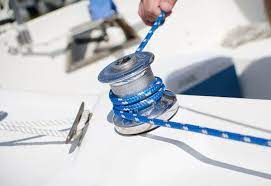Whether you’re just starting out on the water or an experienced boater, understanding the different types of sailing boats is critical. There are three key characteristics that can help you differentiate sailboats from other types of boats: hull, rig and general configuration.
The first and most obvious difference is hull type; monohulls, catamarans or trimarans are the most common. The second is keel type, which includes fin keel wing keel, bilge keel and daggerboard or centerboard.
Hull
The hull of a sailboat is a vital part of its overall design. Its structure and shape can be influenced by several factors, including speed, load-carrying capacity, stability, power requirements, motion and behavior on the sea, and other special considerations.
The type of hull a sailing boat has will influence its performance in all these areas. This is why it’s important to understand all the different types of hulls that are available, and how they can affect your boat’s performance.
Displacement Hulls
Displacement hulls are a common boat type that sits deeper in the water, and it is supported by buoyancy, rather than thrust from the boat’s engine. They are typically found on large fishing boats and yachts that need to carry a heavy load, and they can handle stronger waves and currents better.
Planing Hulls
Planing hulls are designed to rise and glide on top of the water when enough power is supplied. They are also commonly found on motor-driven water vessels, such as pontoon boats, and they can be found on some smaller sailboats.
Keel
The Keel is the structural core of a sailboat. Its main function is to counteract the force of the wind on the boat’s sails. In addition, the keel also carries ballast. This prevents the boat from heeling over and tipping into the water.
A keel is commonly found on sailboats, kayaks, and motorboats. It is usually vertical but can be horizontal depending on the type of sailing boat it is used on.
There are two main types of keels: Full Keels (FLK) and Fin Keels. Each has its own pros and cons. FLKs are the most common keel found on sailboats due to their simple construction and low cost. They’re also easy to maneuver around when docking and can be adjusted from within the waterway.
Rigging
Rigging refers to everything on a sailboat or ship that holds the sails up. It includes masts and Sailing boat ropes.
All sailing boats have rigging and it determines their type. The rig can be very simple or very complex, depending on the combination of spars and sails.
Usually, the rigging consists of a mast, boom and shrouds. The mast and boom provide directional stability to the boat, while the shrouds and breast back stays help with lateral pressure.
A boat’s rigging is also color coded. This helps a crew member identify a part of the rigging that needs to be replaced.
Rigging is a complicated process that involves putting ropes and chains in the correct places on the hull and other parts of a sailboat to move them around. It is a highly specialized process and should be done by a qualified rigger.
Sails
A sail is a large piece of material that is attached to the mast of a sailing boat. It is used to drive the boat through the water and change its direction and speed.
There are different types of sails, each having their own characteristics and uses. They can include square sails, gaff sails, jib-headed sails (Bermuda or Marconi), spritsails, and lugsails.
They are also divided into groups based on their function: cruising sails for ordinary weather, summer sails for tropical weather, storm sails for heavy weather and racing sails for competitions.
Each of these sails has its own set of materials and processes. For example, a square sail is made by sewing together cloths and cutting the gores. Tabling (a thickened hem) is then sewn along the forward edge of the sail and ropes are sewn inside the luff and foot edges to prevent stretching.









































